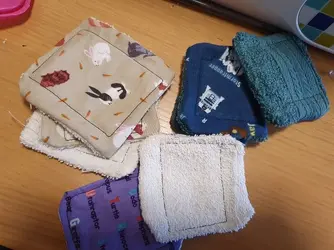Cosmic_Shadow
Junior Guinea Pig
Would these wash pads be suitable for cleaning neuter wounds? I am just trying to steer away from single use items where possible so I just wondered if it would be friendly or not on such a delicate area, it is super soft cotton toweling and cotton for the patterned sides. If not I will literally use them for my own facial routines. Not to worry.
I'm a novice sewer so, apologies that they look terrible.

I'm a novice sewer so, apologies that they look terrible.
